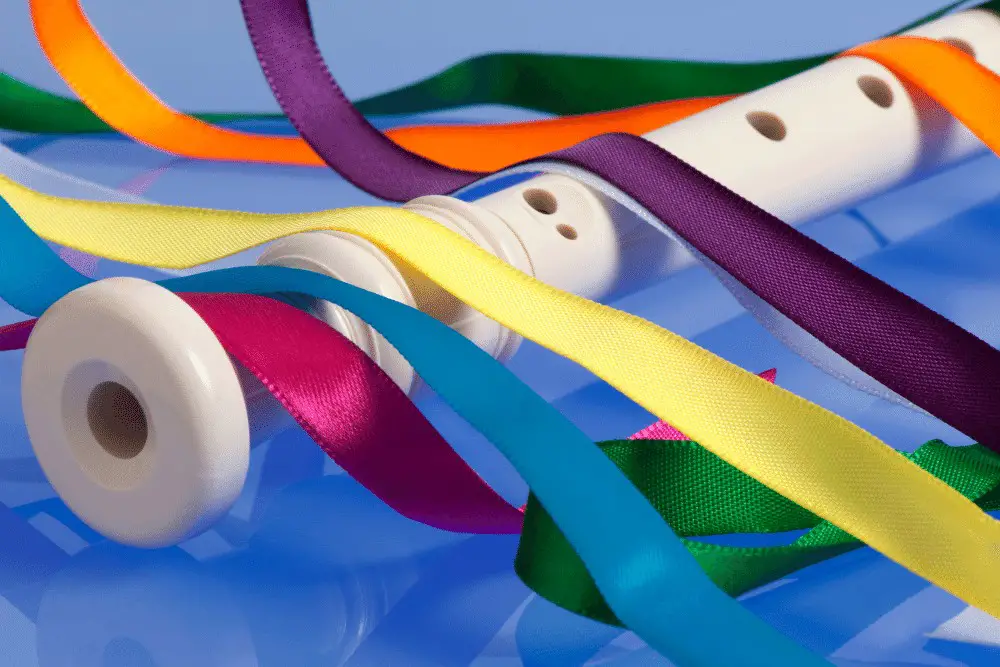Do you want to extend your recorder range?
Are you looking for tips on playing high recorder notes?
As you get better at playing the recorder, you’ll want to stretch into the higher range of notes.
Though it’s rare, you may end up coming across a high A.
This note is dangerous as it’s quite squeaky if you’re not careful.
But I’m here to help with this guide for how to play high A on recorder.
To play high A on the recorder, you’ll need to know the half-thumb technique for playing in the higher octaves. For high A, the recorder fingering is the first hole and second hole covered with the thumb hole half covered.
Check out the rest of the article for tips and general suggestions for playing this note.
Table of Contents
How To Play High Notes On The Recorder
Once you play notes above high D on the recorder, you’ll need a new trick to play because you’re out of recorder fingering combinations.
The technique you need to use is called the half-hole technique.
When you finger a normal note (anything lower than High C), you cover the thumb hole all the way, right?
To make it jump up an octave, all you need to do is slightly uncover the thumbhole (about halfway).
You may also need to intensify the air stream by blowing colder air.
These two things in combination will help your recorder notes jump up the octave.
This trick works for most notes, but they work especially well for high E, F, G, and A.
It works for the other notes too, but the tuning is a little off.
Another tip you may want to consider is to consider the quality and material of your recorder.
Cheap recorders aren’t designed to handle playing at these more complicated notes.
The squeaking is much worse with these.
Wooden recorders also handle the higher notes easier (and better sounding) than plastic recorders.
If you’re serious about a recorder, you should spend the little bit of extra money on a wooden one.
I like the Yinghow wooden recorder. It sounds great and doesn’t break the bank at all.
Fingering High A On Recorder
With this in mind, we can figure out how to play high A on a recorder.
Though you may not need to know how to play it often, it will show up on occasion.
Here’s how I teach my students to think about it (it’s how I think about it too).
Start by fingering a low A, the one on the second space from the bottom of the treble clef staff.
To finger this note, you need to:
- Cover the thumb hole
- Pointer finger covering the first tone hole (left hand)
- Middle finger covering the second tone hole (left hand)
Pretty simple, right? For many, this is the second note they ever learn!
To make it jump up the octave and become a high A, we use the half-hole technique.
Shift your thumb down slightly, so half the thumb hole is uncovered, and slightly intensify your air.
Don’t blow harder. Think about focusing your air.
Some music teachers and recorder players suggest you think about making the air “spin” more.
Whatever works for you is fine.
Commonly Asked Questions
In this section, I’ll go over some questions I get a lot when talking about high A.
What is the highest note on a recorder? – It depends on the size of the recorder.
The most common type is the soprano recorder, so I’ll answer this one.
It depends on the player how high they can play.
For most players, the highest note will be high, high C.
Professionals may play higher, but it’s less practical and functional.
Why is my recorder so high pitched? – It’s just the way the soprano recorder is designed.
Alto, tenor, and bass recorders are lower in pitch because they’re longer.
The sopranino recorder is a fourth higher than the soprano recorder.
If you’re asking about the science of its sound, the recorder is high pitched because it’s short.
With less space to vibrate, the frequency is faster, and therefore the pitch is higher.
Is the recorder hard to play? – No, not at all.
Once you get used to the idea of playing with soft air, the entire world of the recorder is open to you.
Everything else is a matter of developing coordination around the fingers.
How can I practice my recorder quietly? – Since most of the difficult parts of the recorder come from the fingerings, all you need to do to practice the recorder is move your fingers.
Whisper the letters of the note names as they go by in your song and move your fingers.
It won’t help you play perfectly right out of the gate, but you’ll notice a dramatic improvement when you put the air back in.
Final Thoughts
Playing high A on recorder may seem like a tall order, but practice makes progress.
Keep the thumb hole half-covered and intensify the air without overflowing, and you’ll get it in time.
Don’t forget to slow down whatever song you’re playing and gradually speed it back up once you’ve mastered it.

